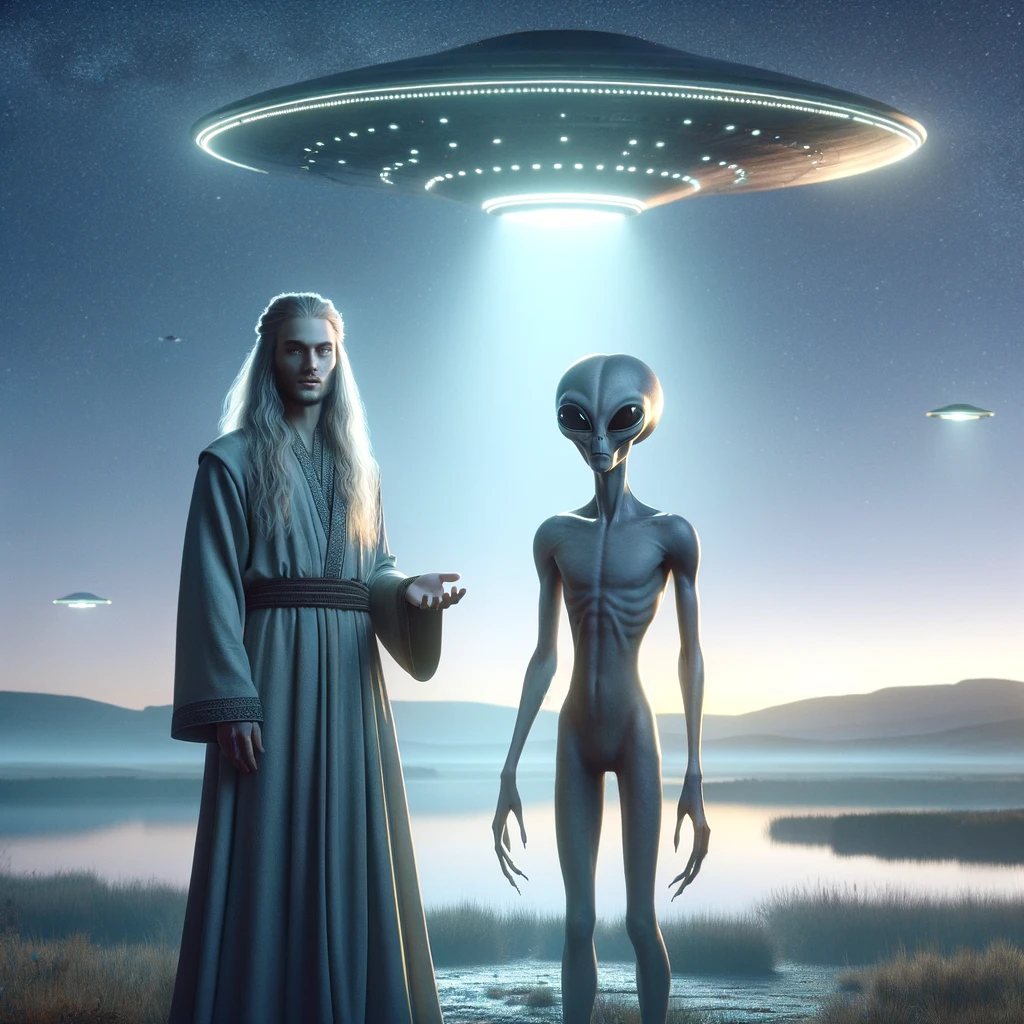Lue Elizondo Criticizes AARO’s UAP Report for Lack of Transparency

In a recent statement released on Twitter, Lue Elizondo expresses his severe disapproval of the Pentagon’s latest public report on Unidentified Aerial Phenomena (UAP) conducted by AARO, labeling the report as “intentionally dishonest, inaccurate, and dangerously misleading.” Elizondo accuses the Pentagon leadership and former heads of AARO of deliberately trying to discredit whistleblowers, ignore substantial evidence, and conceal the truth from both Congress and the public.

While he makes it clear that his grievances do not extend to all AARO personnel, whom he does not hold accountable for the leadership’s decisions, he emphasizes that many individuals who have worked on UAP matters for the government are aware of significant classified evidence that contradicts AARO’s report. Elizondo notes that this evidence has also been accessible to senior members of Congress. He argues that the report underscores the need for Congress to enforce greater legislative action to ensure transparency on the UAP issue for the American populace. Elizondo commits to continuing his efforts alongside others who are aware of the concealed truth to support Congress in their push for full disclosure.
The Advanced Aerospace Threat Identification Program (AARO) is at the heart of a significant controversy within the UFO disclosure community, including from notable figures like Lue Elizondo. AARO, a program within the Pentagon assigned to investigate Unidentified Aerial Phenomena (UAP), has been criticized for its recent public report, which many in the community deem deliberately misleading. The crux of the discontent stems from AARO’s conclusion that there is no convincing evidence of extraterrestrial technology or interference, a standpoint that directly contradicts what many in the UFO community, including Elizondo, claim to know based on classified information they have been privy to.
Elizondo, a former head of the Advanced Aerospace Threat Identification Program (AATIP), asserts that the Pentagon and AARO’s leadership are manipulating information to downplay and debunk whistleblowers’ claims and the existence of evidence pointing to extraterrestrial origins of UAPs. This is significant because he is among those who have been vocal about their experiences and knowledge of UAPs while working within the government. The frustration also arises from the belief that Congress and the public are not being fully informed about the potential extraterrestrial connections of UAPs, despite senior members of Congress reportedly having access to such classified evidence. The contention further deepens with AARO’s alleged attempts to undermine the testimony and credibility of insiders by not prioritizing interviews or deeming third-party narratives as unreliable.

In a statement exclusive to The Good Trouble Show hosted by Matt Ford, Lue Elizondo, the former Director of the Advanced Aerospace Threat Identification Program (AATIP), has vehemently criticized the recent UAP report by the Pentagon’s AARO, overseen by former Director Dr. Sean Kirkpatrick. Elizondo describes the Pentagon’s approach as a continuation of a troubling pattern of obfuscation and denial, despite the acknowledgment by U.S. adversaries of their own UAP programs. He questions the Pentagon’s priorities and dismisses the report as both inaccurate and misleading. Furthermore, Elizondo sees this as the latest in a series of missteps by the Pentagon, lamenting it as a “sad day for democracy” when the public is served misinformation under the pretense of truthfulness and transparency. His words echo a call for accountability and honesty from the U.S. defense establishment regarding the phenomena of UAPs.
The UFO disclosure community is ablaze with reactions to investigative journalist Ross Coulthart’s revelation of the identities and roles of the secret Advisory Committee members of AARO, the entity that “pulled the strings” behind the recent UFO report.
This has stoked existing frustrations, particularly given AARO’s issuance of zero document subpoenas, witness subpoenas, and the lack of any witnesses being sworn in and questioned. This inaction has led many to conclude that when it comes to AARO’s efforts towards UFO transparency, the result is always nil. The community’s long-standing suspicion of a government cover-up finds renewed vigor, feeding into a narrative that the cover-up may be more shocking than the disclosure of extraterrestrial life itself. This sentiment is fuelled by a history of Pentagon dismissals regarding aliens and a string of denials over the years that seem to align with the notorious Condon Report – often criticized for its skeptical stance on UFOs. The UFO report’s perceived failure to address the community’s demands for disclosure is feared to become a public relations disaster, and there is palpable concern behind the scenes. Many believe the Department of Defense is taking a significant risk by doubling down on this position through AARO’s report, which could backfire if a whistleblower with evidence emerges, ready to defy the odds for the sake of transparency. The document findings from AARO indeed reflect no issuance of subpoenas or questioning, suggesting a lack of thorough investigation as perceived by the community, which aligns with the community’s concerns about the integrity of the report and the approach taken by the Department of Defense.
The AARO report does not mention “non-human intelligence (NHI)” explicitly, despite this being a term currently used in the discourse on unidentified aerial phenomena (UAP). The report’s exclusion of this term may contribute to its characterization as a form of “word salad” by some within the UFO disclosure community. The document is replete with a variety of terms and phrases such as “extraterrestrial,” “off-world technology,” and “UAP,” which could be seen as evasive or intentionally complex, thereby obscuring clear meanings or conclusions. The absence of “NHI” in the report suggests a possible reluctance or refusal to engage with one of the community’s central concepts, which may lead to further speculation that the report is designed to conceal more than it reveals. The use of language in the report may be seen as an attempt to control the narrative by adopting specific terminologies that narrow the interpretation of evidence and testimony, which some might compare to redefining common understandings of terms to suit a particular narrative, as was famously the case with the reinterpretation of “sexual relations” in a political context.
The tension surrounding the AARO report within the UFO disclosure community reveals a deep chasm between the expectations for government transparency and the findings—or lack thereof—presented by official investigations. Lue Elizondo’s emphatic disapproval and allegations of deception by the Pentagon and AARO leadership resonate with a community that is skeptical of government narratives, particularly when it comes to unexplained aerial phenomena. The absence of certain terms such as “non-human intelligence” in the AARO report, despite their prevalence in current UAP discussions, contributes to the sentiment that the report is evasive, mirroring broader frustrations about government accountability. The convergence of claims from diverse individuals and the government’s historical pattern of denying extraterrestrial implications further amplify calls for more substantive disclosure.
The report’s careful dissection of cases and interviews appears to meticulously avoid the acknowledgment of any phenomena that cannot be explained with current scientific understanding or attributed to known technology. The assertions that no evidence suggests extraterrestrial or “off-world” origins for UAPs can lead one to ponder about other forms of non-terrestrial vehicles. Specifically, the term “off-world” may inadvertently narrow the scope of understanding to things originating from other planets or celestial bodies, without considering the broader possibilities such as interdimensional vehicles, which could imply entities or crafts that originate from different dimensions or realities intersecting with our own. The fact that these phenomena are observed here implies that they are, at least momentarily, part of our world. This notion of interdimensionality is not addressed in the AARO report, which focuses strictly on a extraterrestrial framework. This omission could be seen as a significant gap in the exploration of UAP phenomena, especially for those who consider “non-human intelligence” to potentially have origins beyond our conventional three-dimensional space-time.



